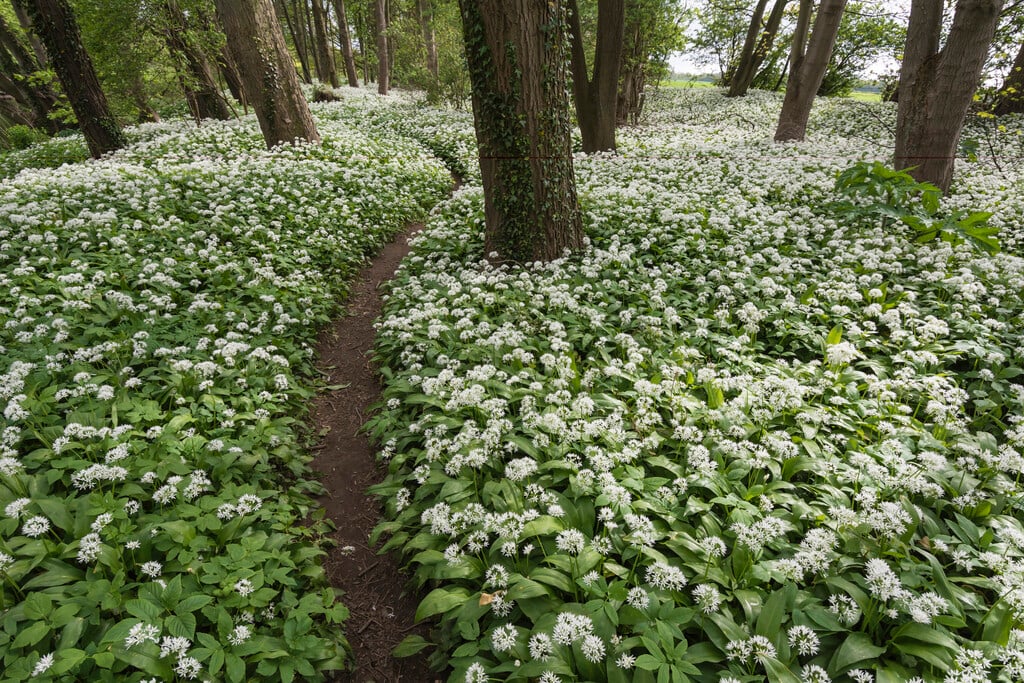Allium ursinum
ramsons
Vigorous, garlic-scented, bulbous perennial forming extensive colonies, with paired, elliptic leaves and erect stems bearing umbels of starry white flowers in late spring. Often naturalised in woodland, this attractive native onion is a good source of early nectar for pollinators and early cover for ground dwellers
Other common names
bear's garlicbuckrams
see moregipsy onion
hog's garlic
ramsomes
wild garlic
wild leek
wood garlic
craf y geifr
Synonyms
Allium ucrainicumSize
Ultimate height
0.1–0.5 metresTime to ultimate height
2–5 yearsUltimate spread
0.5–1 metresGrowing conditions
Moisture
Moist but well–drained, Well–drainedpH
Acid, Alkaline, NeutralColour & scent
| Stem | Flower | Foliage | Fruit | |
| Spring | White | Green | ||
|---|---|---|---|---|
| Summer | Green | |||
| Autumn | ||||
| Winter |
Position
- Full sun
- Partial shade
Aspect
South–facing or West–facing or North–facing or East–facing
Exposure
Sheltered Hardiness
H7Botanical details
- Family
- Amaryllidaceae
- Native to GB / Ireland
- Yes
- Foliage
- Deciduous
- Habit
- Clump forming
- Genus
Allium are bulbous herbaceous perennials with a strong onion or garlic scent, linear, strap-shaped or cylindrical basal leaves and star-shaped or bell-shaped flowers in an umbel on a leafless stem
- Name status
Correct
- Plant range
- Europe, Russia
How to grow
Cultivation
Easy to grow in fertile, well-drained soil, and may be grown for its attractive flowers, edible leaves and wildlife value. However it spreads rapidly through seeds and bulbils and may be best kept out of cultivated areas. See wild garlics for more information
Propagation
Propagate by seed or division
Suggested planting locations and garden types
- Wildlife gardens
- Wildflower meadow
Pruning
No pruning required
Pests
Generally pest-free
Diseases
Generally disease-free but may be susceptible to onion white rot and downy mildews
Get involved
The Royal Horticultural Society is the UK’s leading gardening charity. We aim to enrich everyone’s life through plants, and make the UK a greener and more beautiful place.
